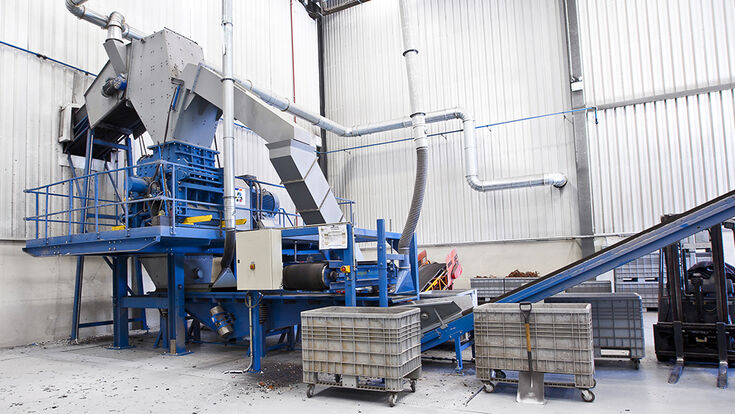Advertorial : The potential of e-waste recycling

Apart from the value of the materials in this waste type, many types of e-waste contain hazardous substances such as lead, mercury, per- and polyfluoroalkyl substances (PFAS), brominated flame retardants (BFR), etc. These must be taken care of to avoid harming both humans and the environment, as they can stay in circulation for many years and contaminate food and drinking water.
So how do you make the most of this potential and make sure the environment is protected at the same time? Have a look at how it can be done with an e-waste recycling setup from ELDAN Recycling.
Getting to the valuable materials
E-waste in the EU is divided into types according to the WEEE directive, where the ones from Annex 1-7 (excluding refrigerators, freezers, air-conditioners, etc.) can be processed in a standard ELDAN e-waste plant. Since e-waste consists of many different materials built together, some sort of size reduction and liberation must take place as the first step.
A manual pre-sorting and light dismantling can ensure a high purity of the products. You can easily sell specific high-value parts like whole PCBs if they are sorted out before shredding. Some parts may even be reused as they are. And other materials, like vacuum bags, batteries, capacitors, etc. must be removed to avoid contamination or harmful substances from escaping.
An effective size reduction and liberation follows in a machine like the ELDAN Ring Shredder where impact rings hit the material to liberate the metals, PCBs, and plastic. This enables an easy sorting afterwards. Many different types of e-waste can be processed in the same machine, but some, like refrigerators, freezers, air-conditioners, li-ion batteries, etc. will need a different setup with an inert process to keep harmful gasses from escaping into the atmosphere. And for large appliances or to increase the capacity of the plant, an initial size reduction in a pre-shredder like the ELDAN Super Chopper may be needed
Pure materials for the products of the future
After the initial sorting and size reduction, sorting and further size reduction of the materials can follow downstream. Firstly, steel is sorted out by magnets, and most non-ferrous metals and PCBs are removed from the plastic and other organic fractions by means of eddy current separator.
The eject fraction from the eddy current separator contains non-ferrous metals and PCB’s. These can be manually sorted in 3 fractions: PCB’s, a copper and brass fraction, and a grey metals fraction, mainly aluminium. These can all be sold as they are for refining. The drop fraction consists of the organic fraction, mainly plastics, mixed with smaller metal parts, wires, cables, stainless steel, etc. This fraction can be processed further to recover remaining metals.
Stainless steel is removed with a strong Nd-magnet first, and the rest is run through a metal detector that sorts the metal and cables from the organic fraction. The metals and cables are then granulated to liberate the materials and prepare these for sorting on a separation table. The resulting mixed non-ferrous metal fraction will have a purity of >98 %, including some PCB parts, perfect for selling to refineries.
Achieving a high purity is important for recycled materials. Compromising on safety, quality, or durability just because a material has been recycled will not solve our waste problems. With a partner like ELDAN Recycling, you will get solutions with guaranteed high product purity and plant capacity. 65 years of experience with machines for recycling different materials and a close collaboration with customers ensure quality and high service. This benefits both the recycling industry, consumers, and our environment.
For more information on ELDAN e-waste recycling, visit https://eldan-recycling.com/electronics-recycling/
